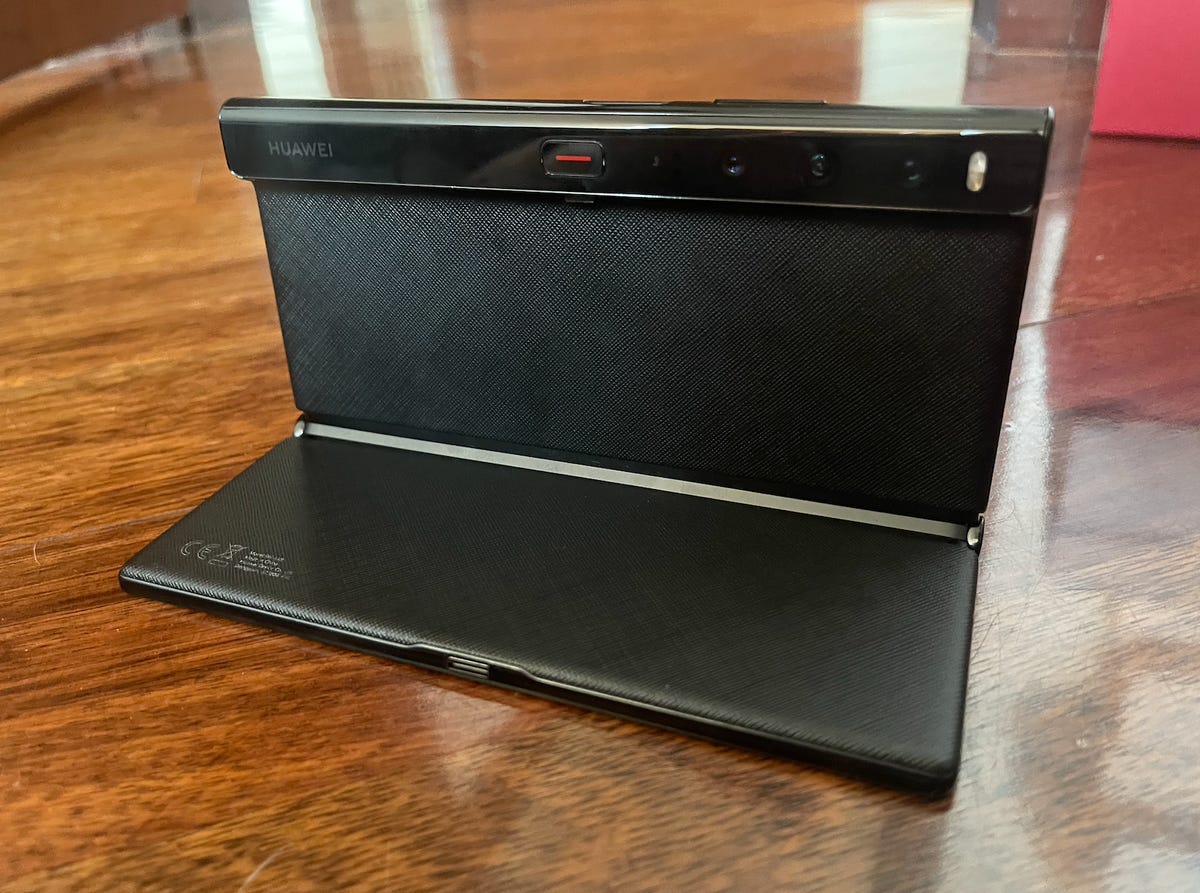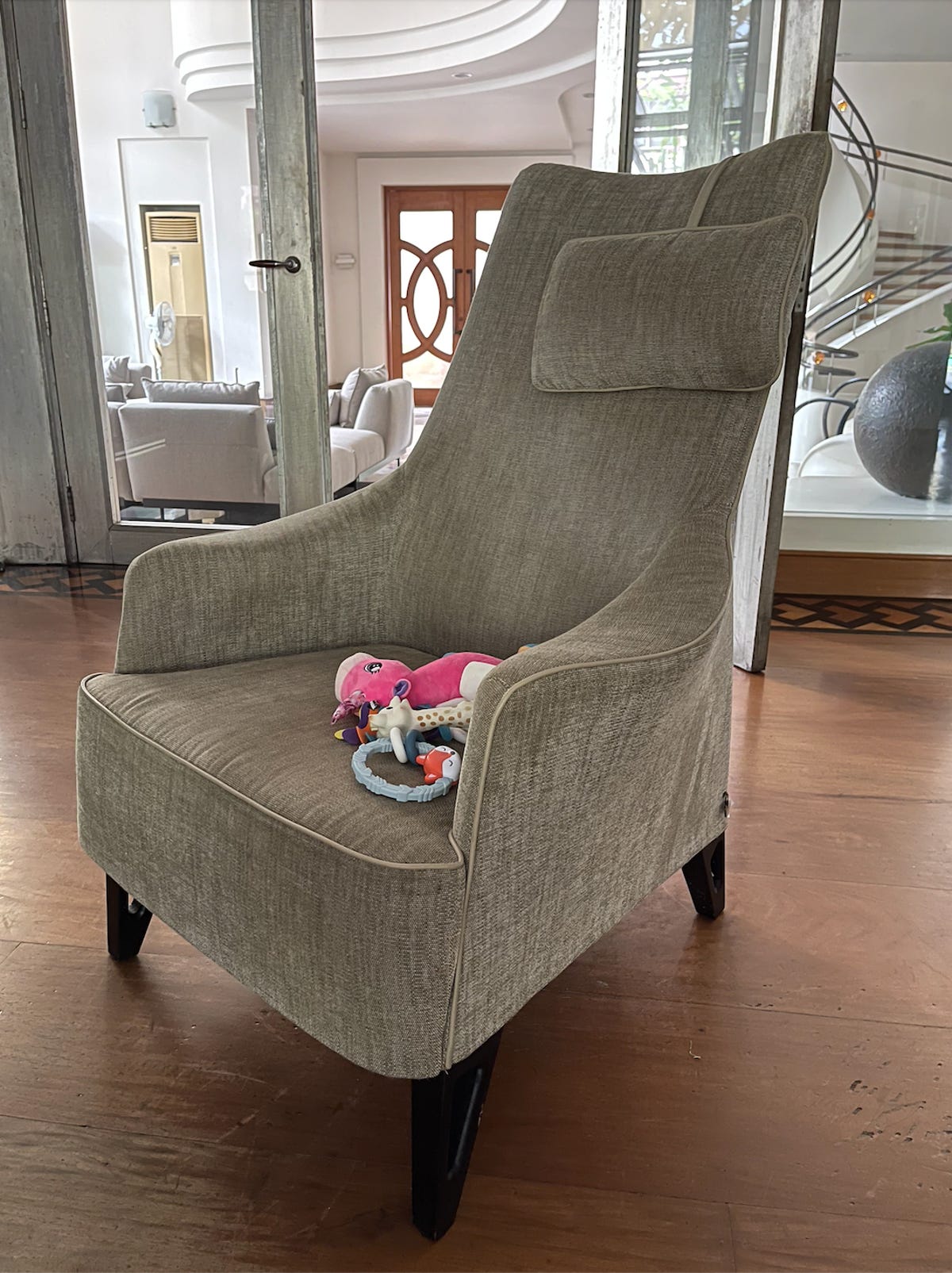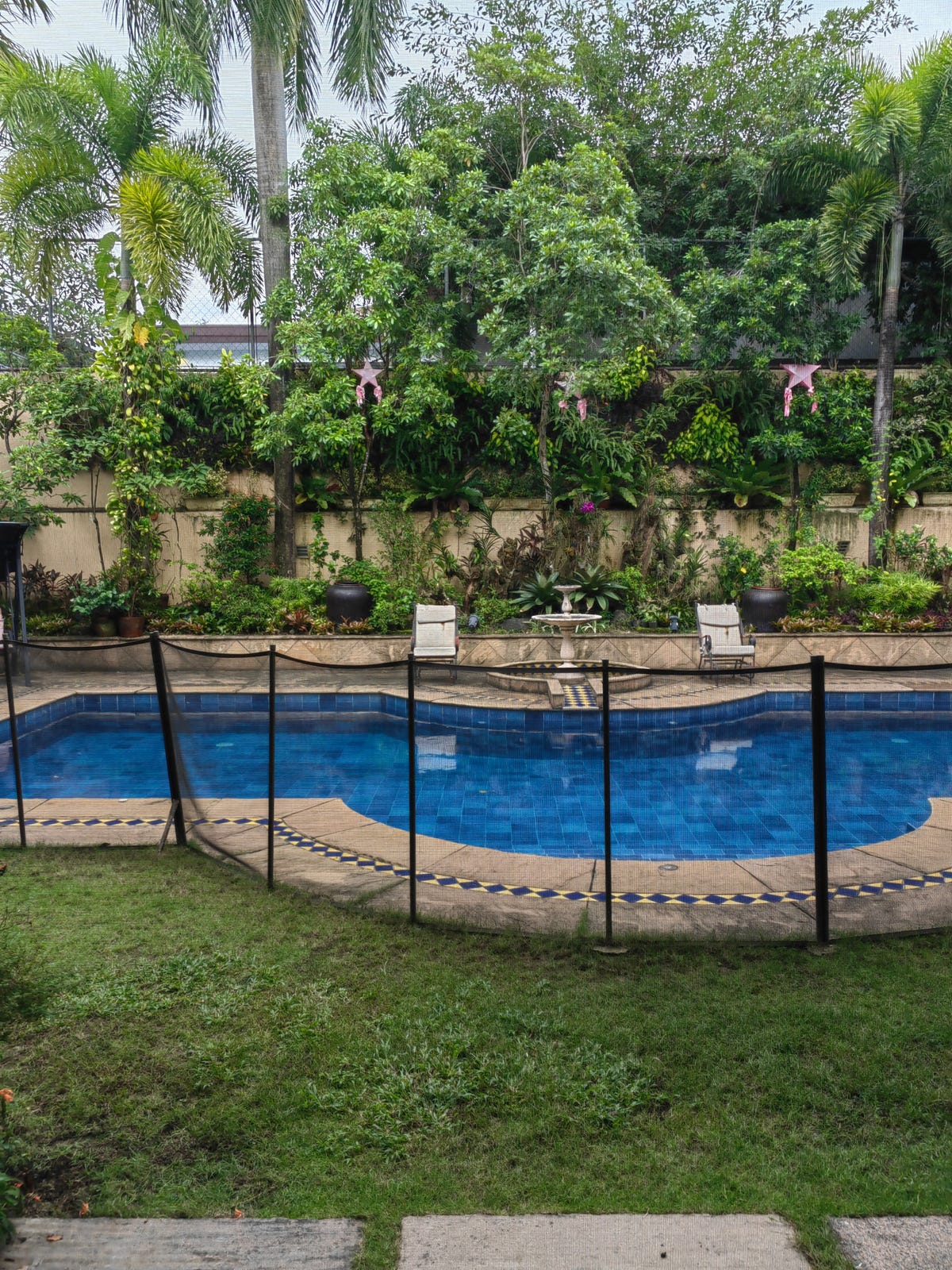
Are foldable phones better off with one screen like the new Huawei Mate XS 2, or two, like the Samsung Galaxy Z Fold 4? Huawei seems to believe the former and doubled down on its signature single-folding-screen design that debuted on the Mate XS in 2020.
With its unique wraparound design, the Mate XS 2 takes the crown as the world’s slimmest and lightest folding phone. It beats Xiaomi and Samsung to that title by a hair, or rather, by 7 and 8 grams respectively. Though both Samsung’s and Xiaomi’s comparable foldable phones have dual screens.
The Mate XS 2’s single-screen design also allows the two halves of the phone to fold flat against each other without a gap. Even in its newest iteration, the Galaxy Z Fold 4 still has a wedge-shaped gap when it’s folded closed.
In addition to a slick hardware design, the Mate XS 2 features a high-resolution display without a discernible crease (even to my touch). It also has a telephoto camera, loud speakers and respectably fast performance. The multitasking experience was intuitive and gameplay looked smooth, even though the phone runs on a 4G version of last year’s Snapdragon 888 chip.
Like
- Creaseless display
- Slim, portable design
- Telephoto camera
- 66W fast charging
Don’t Like
- Lacks 5G
- Missing Google software and services
- The software doesn’t take full advantage of the fold
- So-so battery life
- Phone can’t be unfolded when in case
That brings me to the downsides of Mate XS 2. Since it runs on a 4G chip, that obviously means it’s not compatible with 5G networks. Google apps such as Gmail and the Google Play Store are also still missing as a result of years-long geopolitical tensions with the US. Unsurprisingly, the Mate XS 2 is not set for a US release either. There is no IP rating either for water and dust resistance.
And even though the exterior wraparound display is a highlight of the design, I fear that the rear section of the screen that comes into contact with surfaces may be vulnerable to damage over time. Huawei emphasized the XS 2’s scratch resistance and boosted strength, even saying that the phone’s rear display doesn’t directly touch surfaces when laid flat (more on that later).

Sareena Dayaram/CNET
Huawei Mate XS 2 and its premium price
The Mate XS 2 is on sale in the UK and starts at £1,700, which converts to around $1,885 or AU$2,860. That price gets you 8GB of RAM, 512GB of storage and expandable storage up to 256GB via Huawei’s proprietary nano memory SD card.
Like other foldable phones, the Mate XS 2 commands a steep price, which makes it tough to recommend for most people, especially when you consider the downsides (lack of 5G and Google services). By comparison, the Galaxy Z Fold 4, which starts at $1,800 (£1,649), might be a better purchase for people who have their heart set on getting a foldable phone, since it offers fewer compromises. Still, if you are determined to get your hands on a wraparound-style folding phone, the Mate XS 2 is really your only option, flaws and all.

The Mate XS 2 stars unfolding with the click of a button.
Sareena Dayaram/CNET
Huawei Mate XS 2 has four cameras
On paper, the Mate XS 2’s four cameras seem solid. The rear camera module has a 50-megapixel main camera, a 12-megapixel ultrawide and a 10-megapixel telephoto. On the front is a 10.7-megapixel selfie camera. I’m glad to see the telephoto lens, which makes capturing faraway objects easy.
However, in the real world, some photos turned out dark despite ample lighting, with shadows overpowering the image. I compared the Mate XS 2’s photos with ones taken with a two-year-old iPhone 12 Pro Max, and I preferred the photos taken with Apple’s older, less-expensive device.
Overall, the Mate XS 2 took respectable photos, but they weren’t best-in-class. They lag behind the camera systems on the Galaxy S22 Ultra and iPhone 14 Pro Max, among others in terms of image quality. To be fair, subpar cameras are sort of an expectation in the foldable space, since you’re essentially paying for the novelty of a fancy flexible screen and hinge rather than stellar cameras. On a nonfoldable phone, typically the higher the price, the better the cameras.
Photos taken with the Mate XS 2 in low-light conditions were dark and sometimes drab. But it seems Huawei made a tradeoff in terms of using lesser-quality cameras to enable the XS 2’s super-slim design. There’s less space to house a larger camera unit.
On the flip side, this sort of foldable design lets you use the rear cameras to capture selfies and rely on the rear display as a viewfinder.

The Mate XS 2 managed to capture the vibrancy and pops of color in this painting accurately.
Huawei

This shot was taken on an overcast day in Hong Kong, but the picture makes the environment look a lot more shadowy than it actually was. A lot of the foilage that should have been green in this photo looks closer to black.
Sareena Dayaram/CNET

Sareena Dayaram/CNET

Example of Huawei’s 30X digital zoom. It’s quite blurry but still gives you an idea of what’s going on literally miles away, if you even needed that. You’ll get some context of how incredibly far it zoomed in by scrolling up to two pictures up, where you can see a tiny boat sailing by.

Despite being taken in an indoor environment during the day, this Mate XS 2 photo turned out darker than the actual environment. You can see a similar image, which I took with the iPhone 12 Pro Max, right below for a comparison.
Sareena Dayaram/CNET

You can see the texture of this sofa better in this photo taken with the now two-year old iPhone 12 Pro Max than the one taken with the Mate XS 2. Notice how much brighter this photo is as well.
Sareena Dayaram/CNET

The Mate XS 2 managed to take impressive, detail-packed photos at night. You wouldn’t even know I was sitting in a dark room by looking at this picture.
Huawei

The Mate XS 2 did a good job of capturing texture and detail in this photo.
Sareena Dayaram/CNET
Huawei Mate XS 2 and its ‘Falcon Wing’ hinge
The Mate XS 2 represents Huawei’s fifth attempt at a foldable phone. After releasing varying styles of foldable phones, Huawei returns to its design roots. Since there is just one screen, the XS 2 is surprisingly lightweight and supremely slick for a foldable phone.
When folded closed, it almost feels like a nonfoldable phone, thanks to its portability. When unfurled, it measures just 5.4mm thick, which means the Mate XS 2 handily out-slims competitors like the dual-screen Galaxy Z Fold 4 and Xiaomi’s Mix Fold 2. The XS 2 is slimmer than premium nonfolding phones like the iPhone 14, which measures 7.8mm thick.
Weighing 255 grams, the Mate XS 2 is just a touch heavier than big nonfoldables like the iPhone 14 Pro Max (240 grams). Part of the XS 2’s lighter weight comes from Huawei using plastic instead of aluminum on the back panel, or the backside of the device when it is unfolded.

The Mate XS 2 features Huawei’s signature single-screen wrap-around design.
Sareena Dayaram/CNET
With the Mate XS 2, Huawei also debuted its “double-rotating Falcon Wing hinge design,” which the company says keeps components tightly packed to achieve a seamless folding screen. Going back to my concerns about the portion of the display that serves as the back of the phone, Huawei claims the screen will never touch flat surfaces because of a gap created by the aluminum-alloy protective frame around the screen. To my naked eye however, it seemed as if the device was laying flat on a surface, though I didn’t notice any wear and tear on the screen in my limited time with the Mate XS 2.
The Mate XS 2 comes with a phone case in the box, but I doubt many will actually use it since it’s impractical. You can’t unfold the phone with the case on; if you want to do so, you’ll have to remove it from the case.

EMUI 12, Huawei’s latest mobile OS, debuted a more consolidated Control Panel. I would have loved to see the software take more advantage of the phone’s fold.
Sareena Dayaram/CNET
Huawei Mate XS 2 has a 7.8-inch display
Unlike the Galaxy Fold 4 or the Mate X2, the Mate XS 2 unfolds with the click of a button. The AMOLED cover screen feels similar to a nonfoldable display in my hand. It expands into a 7.8-inch tablet-size display. In my experience, the display looked crisp, was responsive, and reasonably bright in sunny conditions. It also has a 120Hz refresh rate, which made navigating between apps and scrolling through news feeds a smooth experience.
The Mate XS 2’s software has enhanced multitasking, but due to the phone’s wraparound design, only half of the main display stays on when it’s folded in half. This stands in contrast to Galaxy Z Fold 4’s Flex Mode software capabilities, which let you use the screen when it’s folded at a 90-degree angle.
Huawei Mate XS 2 gets a big battery
The Mate XS 2 is powered by a 4,880-mAh battery. Like its cameras, that sounds impressive on paper. But in actual use, battery life wasn’t great. It clocked 10 hours of video playback on medium brightness when folded. I imagine that duration would be even shorter if tested when unfolded and using the larger screen.
There was no in-box charger provided in the review sample I received, but you’ll get a 66-watt charging brick when you buy the phone, which Huawei promises will revitalize your battery from 0% to 100% in 30 minutes.

A diagram showing the Mate XS 2’s unique approach to multitasking.
Huawei
Huawei Mate XS 2’s EMUI 12 software
The Mate XS 2 runs on EMUI 12, which is based on an open-source variant of Android 11. Yet it lacks any of Google’s popular software and services such as the Google Play Store and Gmail as a result of US sanctions. With EMUI 12, Huawei made it easier to control multiple devices from the XS 2 and consolidate menus on the control panel. For example, you can swipe to gain access to audio playback, Bluetooth, Wi-Fi and other settings without leaving your current screen.
However, due to the outward folding design of Mate XS 2, the software does not take advantage of the folding design in the same way that the Galaxy Z Fold 4 does when it’s folded in half. For example, Samsung’s Flex Mode splits an app between top and bottom portions of the screen when the Z Fold is propped open. With the Mate XS 2, only half of the main display stays on when you fold the device in half, with content shifting to the “cover” screen and the other half of the screen simply turned off.
Mate XS 2 performance
In my short time with the Mate XS 2, the device performed without a hitch whether it was multi-tasking, gameplay, YouTube videos or even just switching between apps. However, the performance charts below indicate that Mate XS 2 lags behind some of its rivals.
3D Mark Wildlife Extreme
Mate XS 2
Note:
Performance tests across some 2022 and 2021 flagships
Mate XS 2 into the future
The fact that the Mate XS 2 runs on a 4G chip and lacks the full power of Google Mobile services is a sign of the toll that US sanctions and the global chip shortage are taking on Huawei. It’s a shame that Huawei, a pioneer in foldable phones, can no longer freely compete against Samsung, Xiaomi and (potentially) Apple to drive foldable innovation forward. That said, I would have loved to see Huawei’s software take better advantage of the fold on its Mate XS 2 — though I wonder how that would work, since the fold isn’t actually down the middle.
Currently, you can multitask via split screen when the Mate XS 2 is unfolded, but apps don’t split in half between top and bottom portions of the screen when it’s folded halfway. I’m a big fan of the Galaxy Fold 4’s Flex Mode and appreciate all the efforts Samsung has put into developing it, with the newest addition being a trackpad feature on the bottom of the screen. It would be fantastic to see Huawei head down a similar direction with successors of the Mate XS 2.

As you can see in the timelines above, Huawei has returned to its design roots with the Mate XS 2’s outward-folding style.
Huawei
Mate XS 2 vs. Galaxy Z Fold 4 vs. Mix Fold 2
| Huawei Mate XS 2 | Galaxy Z Fold 4 5G | Mix Fold 2 | |
|---|---|---|---|
| Display size, resolution | Internal (unfolded): 7.8-inch, 2,480×2,200 pixels | Internal: 7.6-inch AMOLED, 2,176x 1,812 pixels; external: 6.2-inch, 2,316×904 | 6.56-inch AMOLED Display, 2,520×1,080 pixels |
| Dimensions (Millimeters) | Unfolded: 156.5 (H) x 139.3 (W) x 5.4mm (T); folded: 11.1mm (T) | Folded: 67.1 x 155.1 x 15.8mm (hinge) ~14.2mm (sagging); unfolded: 130.1 x 155.1 x 6.3mm | Folded: 161.6 x 73.9 x 11.2mm |
| Weight (Ounces, Grams) | 9 oz; 255 grams | 9.27 oz; 263g | 9.24 oz, 262g |
| Mobile software | EMUI 12 | Android 12L | MIUI Fold 13 based on Android 12 |
| Camera | 50-megapixel (main), 13-megapixel (ultra-wide), 8-megapixel (telephoto) | 50-megapixel (main), 12-megapixel (ultra-wide), 10-megapixel (telephoto) | 50-megapixel (main), 13-megapixel (ultra-wide), 8-megapixel (telephoto) |
| Front-facing camera | 10.7-megapixel | 4-megapixel (under display), 10-megapixel (front cover) | 20-megapixel |
| Video capture | 4K | 4K | 4K |
| Processor | Snapdragon 888 4G | Snapdragon 8 Gen Plus 1 | Snapdragon 8 Gen Plus 1 |
| RAM/Storage | 8GB, 512GB | 12GB + 256GB/512GB/1TB | 12GB+256GB, 12GB+512GB, 12GB+1TB |
| Expandable storage | Yes, up to 256GB | None | None |
| Battery/Charger | 4,600 mAH (66W fast charging) | 4,400 mAh | 4,500 mAh |
| Fingerprint sensor | In-display | Side | |
| Connector | USB-C | USB-C | USB-C |
| Headphone jack | None | None | None |
| Special features | Wraparound foldable phone, 30x zoom, 120Hz display | Foldable phone, 30x optical, 30x space zoom, IPX8, 25-watt fast-charging (no in-box charger) | Dual-screen foldable: telephoto 2x optical zoom, 45mm focal length equivalent, 67W fast-charging |
| Price | Converts to $1,885 | $1,800 (256GB) | Converts to $1,270 (256GB) |
| Price (GBP) | £1,700 (512GB) | £1,649 (256GB) | Converts to £1,130 (256GB) |
| Price (AUD) | Converts to AU$2,860 | Converts to AU$1,915 (256GB) |
